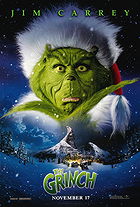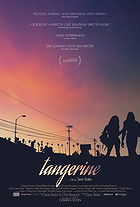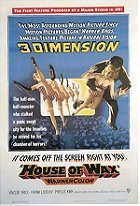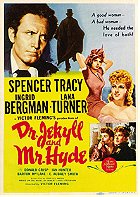Posted : 6 years, 6 months ago on 25 December 2018 02:28
(A review of
Freaks was Tod Browning’s passion project. His earliest work on the project can be traced back to 1927, and it’s something of a miracle it got made at all. It’s an even bigger miracle that MGM didn’t bury this thing after the horrific first reactions and heavy editing involved.
It’s tantalizing to think about the film that Freaks might have been, but what emerges as you watch it is a sense that is unclassifiable film is still a masterpiece. It’s nearly impossible to wrap your brain around the prestige and glamour of MGM having produced this humane, sympathetic, and yes, scary film. Was wunderkind producer Irving Thalberg merely trying to recreate the box office and magic of Dracula and Frankenstein? Probably, but boy did he get something wholly different.
Browning has compassion and empathy for those dubbed “freaks,” and he works to humanize them throughout. This point-of-view, spoken aloud by Wallace Ford and Leila Hyams, reflects Browning’s own history as it spent a great deal of time traveling the country in a circus during the late 1800s. If you’ve ever wondered why so many of Browning’s best known films involve circuses and their performers, why they’re so routinely conscious of their struggles and desires, then this bit of biographical trivia will fill in that blank.
Freaks is of a piece with his other works like The Unknown, another tortured love story in a circus with horror undertones. These films spend a great deal of time examining the minutia of a performer’s daily life, and we begin to identify with them as people before the curious and troubling story beats kick in. The brief running time of Freaks means that this sympathy is essential for the complicated emotions of the ending to work.
The story finds Hans, one of the little people in the sideshow, falling in love with the trapeze artist Cleopatra. Cleopatra is carrying on an affair with Hercules the strongman, but indulges Hans’ affections because of his immense wealth. Once she realizes that she can get a few things out of him with coy flirtations and touching, she decides to up the ante by marrying and then poisoning him. Once the rest of the sideshow learns of her horrifying actions they devise a plan to protect their own and save Hans.
It is in the final moments of this twisted courtship that Freaks pulls away from “slice of life” scenes and into more atmospheric, terrifying territory. Everyone knows the two biggest set pieces of this section of the movie, the wedding scene and the rainy night revenge. The wedding scene is a scene that transforms the film from something akin to cinema verite towards the shadowy, hallucinatory aesthetic of the Universal Monsters. The sideshow performers announce their intention to accept Cleopatra as one of them and pass around the “loving cup,” but soon Cleopatra and Hercules erupt in scornful mocking of the entire scene.
That scornful eruption underscores much of what makes Freaks such an essential masterpiece: for all of their physical disabilities or deformities, these circus freaks contain the same wants and dreams as the rest of the us, and it’s the characters whose compromised morality and inability to see their humanity that emerge as the true monsters/freaks of the film. Cleopatra and Hercules may be attractive and capable of passing through society unnoticed or commented upon, but their hearts are twisted things incapable of connection or empathy with anyone not exactly like them.
The destructive harm these two threaten to the circus means that something must come around to right the wrongs. I mean, that’s just basic horror movie morality play at work. Whatever is coming about to disrupt the stasis, be it a werewolf or stalking serial killer, it must eventually be expunged. This leads us the rainy night revenge scene.
This is probably Freaks’ must outright concession to a being a horror movie. The intolerance of Cleopatra and Hercules must be snuffed out, and the thunderstorm, mud, and hinted at violence of this make it truly unnerving. This is the most exploitative moment, probably the only one in the film, that finds many of the less mobile sideshow performers slowly crawling towards a frantic Cleopatra and Hercules. What exactly happens to Hercules is a mystery, but Cleopatra’s fate ties into the carnival barker introduction in a neat little bow.
First reactions to this film found its viewing audience siding more with Cleopatra than Phroso or Venus, a circus clown and seal trainer that meet the freaks as equals and react with disgust at their mistreatment. MGM removed about thirty minutes from the running time, leaving Freaks at a little over an hour, and couldn’t figure out an ending. They eventually settled on a happy coda that finds Hans reunited with Phroso, Venus, and Frieda, Hans’ original fiancée and a fellow little person in the circus sideshow. It’s a strange beat to end on and something of tonal whiplash after the violence of the prior scene, yet it doesn’t harm in the film in any material way. What emerges in the end is a sense that Freaks is a compassionate film buried beneath a label of “horror” and a complicated history that serves as an anchor around its neck.
 Login
Login
 Home
Home 95 Lists
95 Lists 1531 Reviews
1531 Reviews Collections
Collections
 0 comments,
0 comments, 







